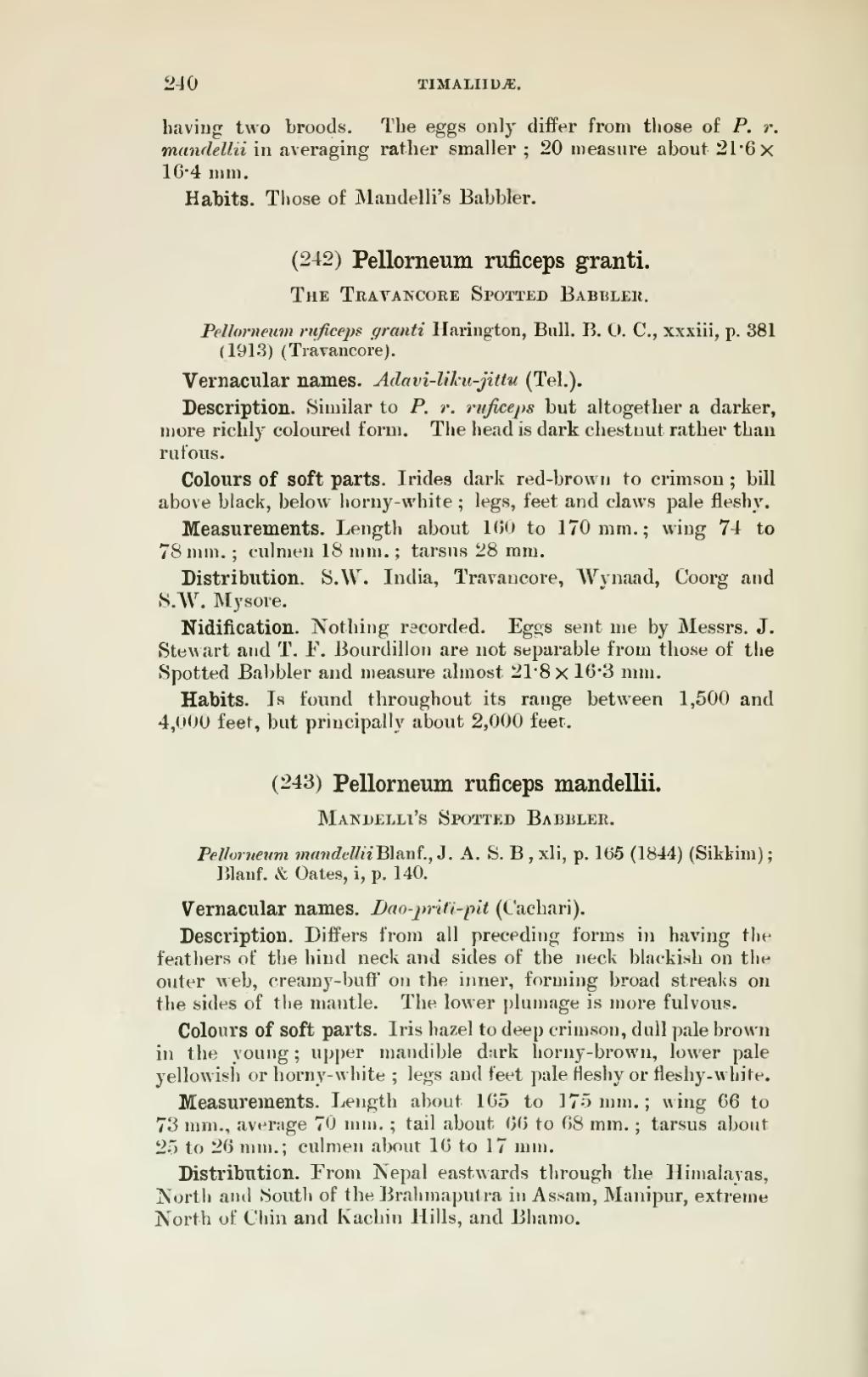having two broods. The eggs only differ from those of P. r. mandellii in averaging rather smaller; 20 measure about 21·6 x 16·4 mm.
Habits. Those of Mandelli's Babbler.
(242) Pellorneum ruficeps granti.
The Travancore Spotted Babbler.
- Pellorneum ruficeps granti Harington, Bull. B. O. C, xxxiii, p. 381 (1913)(Travancore).
Vernacular names. Adavi-liku-jittu (Tel.).
Description. Similar to P. r. ruficeps but altogether a darker, more richly coloured form. The head is dark chestnut rather than rufous.
Colours of soft parts. Irides dark red-brown to crimson; bill above black, below horny-white; legs, feet and claws pale fleshy.
Measurements. Length about 160 to 170 mm.; wing 74 to 78 mm.; culmen 18 mm.; tarsus 28 mm.
Distribution. S.W. India, Travancore, Wynaad, Coorg and S.W. Mysore.
Nidification. Nothing recorded. Eggs sent me by Messrs. J. Stewart and T. F. Bourdillon are not separable from those of the Spotted Babbler and measure almost 21·8 × 16·3 mm.
Habits. Is found throughout its range between 1,500 and 4,000 feet, but principally about 2,000 feet,
(243) Pellorneum ruficeps mandellii.
Mandelli's Spotted Babbler.
- Pellorneum mandellii Blanf., J. A. S. B , xli, p. 165 (1844) (Sikkim); Blanf. & Oates, i, p. 140.
Vernacular names. Dao-priti-pit (Cachari).
Description. Differs from all preceditig forms in having the feathers of the hind neck and sides of the neck blackish on the outer web, creamy-buff on the inner, forming broad streaks on the sides of the mantle. The lower plumage is more fulvous.
Colours of soft parts. Iris hazel to deep crimson, dull pale brown in the young; upper mandible dark horny-brown, lower pale yellowish or horny-white; legs and feet pale fleshy or fleshy-white.
Measurements. Length about 165 to 175 mm.; wing 66 to 73 mm., average 70 mm.; tail about 66 to 68 mm.; tarsus about 25 to 26 mm.; culmen about 16 to 17 mm.
Distribution. From Nepal eastwards through the Himalayas, North and South of the Brahmaputra in Assam, Manipur, extreme North of Chin and Kachin Hills, and Bhamo.
